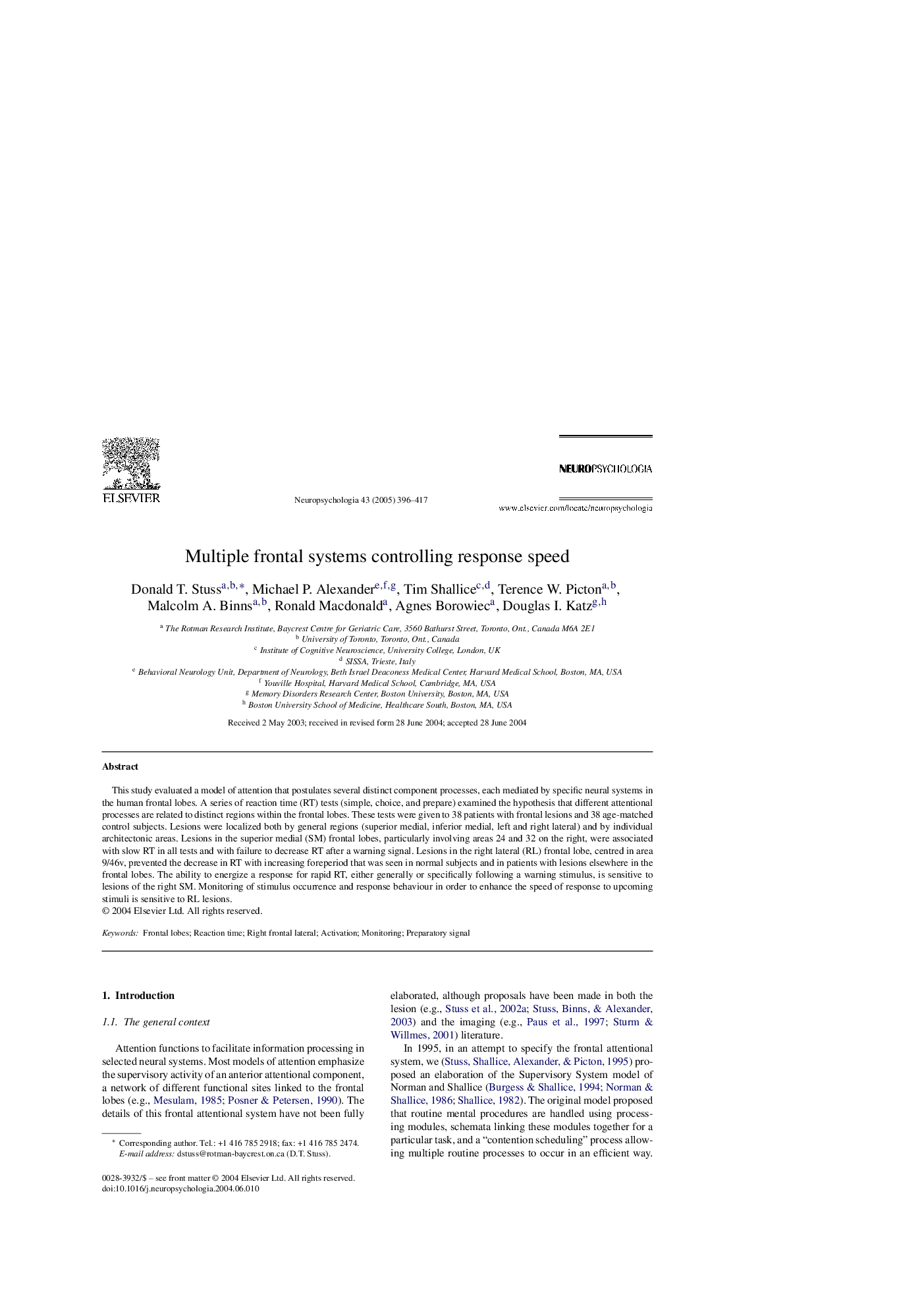| Article ID | Journal | Published Year | Pages | File Type |
|---|---|---|---|---|
| 10467642 | Neuropsychologia | 2005 | 22 Pages |
Abstract
This study evaluated a model of attention that postulates several distinct component processes, each mediated by specific neural systems in the human frontal lobes. A series of reaction time (RT) tests (simple, choice, and prepare) examined the hypothesis that different attentional processes are related to distinct regions within the frontal lobes. These tests were given to 38 patients with frontal lesions and 38 age-matched control subjects. Lesions were localized both by general regions (superior medial, inferior medial, left and right lateral) and by individual architectonic areas. Lesions in the superior medial (SM) frontal lobes, particularly involving areas 24 and 32 on the right, were associated with slow RT in all tests and with failure to decrease RT after a warning signal. Lesions in the right lateral (RL) frontal lobe, centred in area 9/46v, prevented the decrease in RT with increasing foreperiod that was seen in normal subjects and in patients with lesions elsewhere in the frontal lobes. The ability to energize a response for rapid RT, either generally or specifically following a warning stimulus, is sensitive to lesions of the right SM. Monitoring of stimulus occurrence and response behaviour in order to enhance the speed of response to upcoming stimuli is sensitive to RL lesions.
Related Topics
Life Sciences
Neuroscience
Behavioral Neuroscience
Authors
Donald T. Stuss, Michael P. Alexander, Tim Shallice, Terence W. Picton, Malcolm A. Binns, Ronald Macdonald, Agnes Borowiec, Douglas I. Katz,
